Cooking With Brie Larson And Developing Vintage Recipes For Lessons In Chemistry - Exclusive
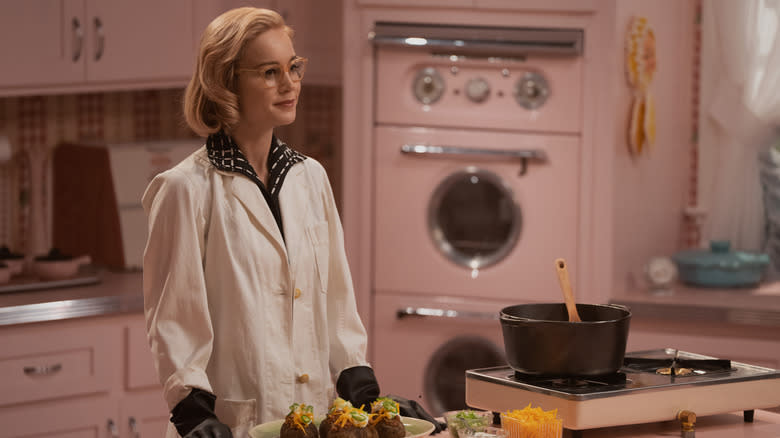
- Oops!Something went wrong.Please try again later.
- Oops!Something went wrong.Please try again later.
AppleTV+ has finally released its television adaptation of "Lessons in Chemistry," based on the novel of the same name, written by Bonnie Garmus. Starring Brie Larson as Elizabeth Zott, Lewis Pullman as Calvin Evans, and Aja Naomi King as Harriet Sloane, food media types and hungry viewers alike have flocked to the first few episodes of the show, consuming each minute of the episode-by-episode release in all of its scrumptious glory. "Lessons in Chemistry" depicts the trials of a female chemist in the 1950s and '60s as she fights against the blatant sexism she seems to face at every turn of her career. Both the show and novel also intimately detail what it means to make a life among the community we cultivate around us.
Part of what makes this story so enticing is that within Zott's struggle, the character takes what is a traditionally feminine role — the obedient housewife — and flips it inside out. Instead of allowing food to be a weapon that keeps women domiciled in the kitchen, Zott uses it as a tool of empowerment and connection. As she says, the work that we do in cooking is important. Here at Tasting Table, we wanted to know what it takes to make such a nuanced and relatable narrative come to life, so we sat down for an exclusive interview with the show's culinary consultant, Courtney McBroom.
Read more: 11 Cleaning Tips For Keeping Your Oven Spotless
McBroom Had A Long Career In Food Prior To The Show
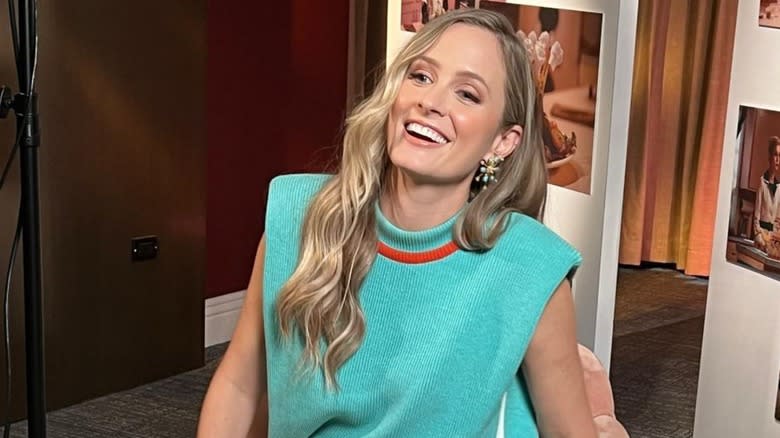
Pretty much anyone who is interested in food-based media would agree that working at the intersection of cooking and television is a dream job. In her conversation with us, Courtney McBroom exuded the aura of someone who's grateful to have landed where she has. And as she mapped out her culinary career thus far, it's obvious that she's someone who is meant to be there, too. Even if her long career didn't start in food.
McBroom said that prior to entering the culinary universe, she went to journalism school only to realize it wasn't for her. Instead, she enrolled in pastry school and began working as a pastry chef in Austin, Texas. Her career took her to the French-American bistro, Jeffery's, before McBroom took a bigger leap to New York City.
On the impetus for moving to NYC, McBroom said, "I knew I wanted to work at Momofuku Milk Bar." She started by looking for ads on CraigsList, eventually finding an opening at Momofuku Noodle Bar instead. She was undeterred. "I sent my resume to them," McBroom told us, "and said, 'I don't want to work for you. Put me in touch with the Milk Bar folks.'"
Ask, and you shall receive. McBroom eventually became the culinary director at Momofuku Milk Bar, along the way publishing recipes in prominent food media outlets, writing a cookbook, and now publishing an "oddball newsletter about throwing dinner parties" called Ruined Table.
Working With A Star (Who Can Cook)
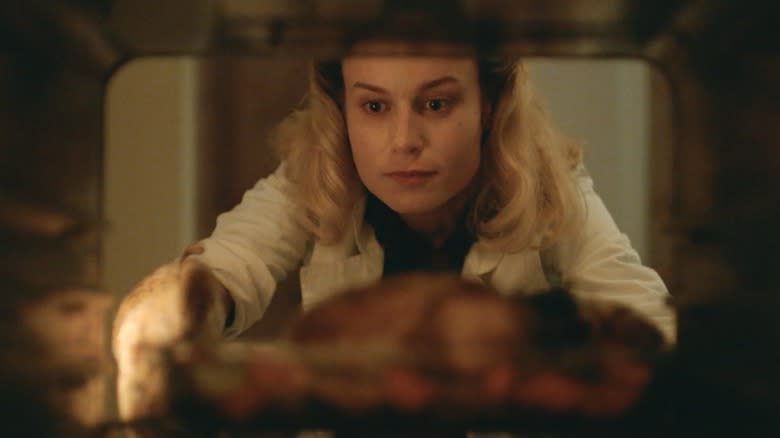
As watchers of the first few episodes of "Lessons in Chemistry" know by now, Brie Larson's portrayal of chemist and cook Elizabeth Zott is engrossing. Larson deftly captures a character who is more layered than mille-feuille, and she's especially powerful in moments of stoicism, grief, and joy. Some of the instances in which Larson best brings Zott to life are those when her character is sharing or serving food. According to Courtney McBroom (and with respect to the talent of Larson), very few of those particularly happy food moments are acting.
"Brie's an excellent actor," she said. "We all know this. But I think that is very genuine; you can see and feel that love. It's there with her all the time, especially when it comes to food."
McBroom's familiarity with Larson's passion for food is well-informed; the two women share a personal friendship and are frequent guests in one another's kitchens. "Brie loves to cook," shares McBroom. "She's a great cook, and she loves serving people and making people feel at home." In a sense, that connection is exactly how Courtney McBroom ended up working on "Lessons in Chemistry."
A Passion For Vintage Cookbooks Was Key
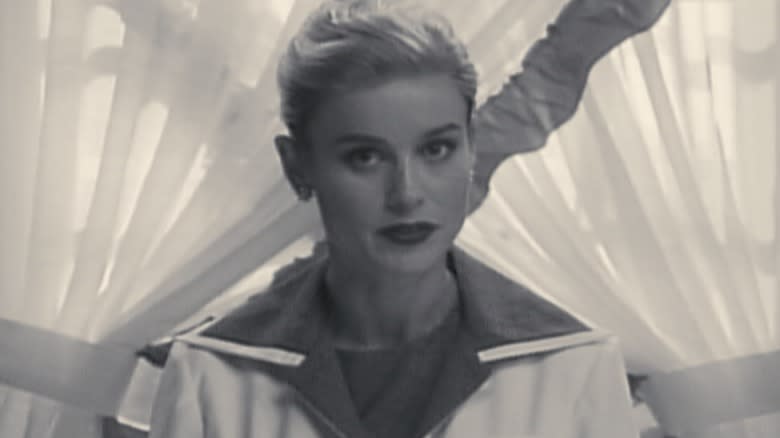
In the case of a food-centric story like "Lessons in Chemistry," it helps if the actors have a personal interest in the subject matter. But with all that the job entails, no one would blame them for working on a role without having an inherent connection. Do the job well, and audiences should never have reason to doubt your emotional investment anyway.
When it comes to bringing a fictional kitchen into reality, however, it's crucial that consultants like Courtney McBroom have in-depth, tangible knowledge of the worlds they'll inform. In McBroom's case, a particular love of retro cooking was necessary for a project like this.
McBroom told Tasting Table that Brie Larson was the first person to contact her about working on the show. "She reached out and was like, 'I know how obsessed you are with vintage cookbooks and vintage recipe cards. I think you'd be the perfect person.'" A week later, McBroom was part of the team responsible for crafting the culinary aesthetic of "Lessons in Chemistry." By leveraging her interest in the dishes, ingredients, and trends of the post-war era, McBroom turned nearly every piece of on-screen food into a symbol or thematic tool that allowed Elizabeth Zott to challenge the status quo, whether on her fictional cooking show "Supper at Six" or in the kitchen with the people she loves.
Ingredients Were Key To Showing A Different 1960s
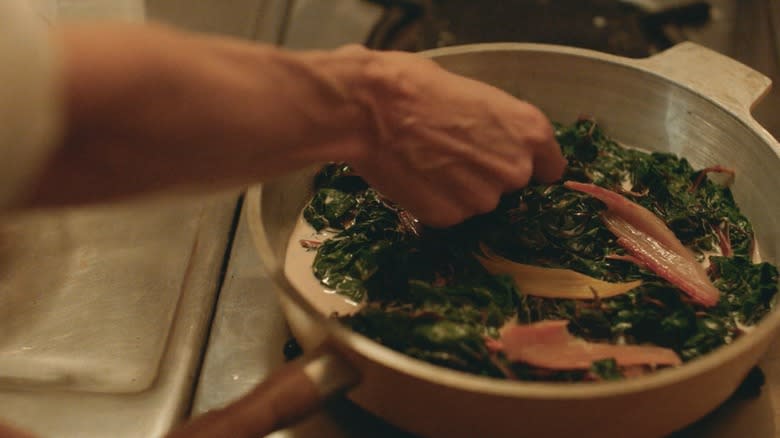
The diet of American eaters in the '50s and '60s is better known for being industrialized than for promoting quality ingredients. Elizabeth Zott exists firmly in opposition to that headless perspective, and to depict her living like this, Courtney McBroom had to carefully consider the ingredients that Zott would work with at home and on "Supper at Six."
"The way that I looked at it is, yes, Elizabeth Zott is very much a woman of the '50s," McBroom told us. "But she's also very much a woman ahead of her time. We didn't want to let the typical '50s food... constrict her cooking in any way."
McBroom had to take a few liberties in her culinary direction, some of which are not indicative of the reality for Americans of that time. Zott is a character who lives on whole ingredients; the show starts with her tearing into a canned soup company, and a later episode hinges on her protest over the moral and nutritional bankruptcy of highly processed oils. In our timeline, this was a period when factory-made foods were on the rise, as were Julia Child-inspired faux-international trends.
Besides the prominent scenes, McBroom relays Elizabeth's values in more subtle ways as well. The character's selection of vibrant delicata squash in the grocery, the placement of a countertop basil plant, and even Zott's use of fresh oysters are all ingredient choices that set the table for conflict, dialogue, and community.
Where McBroom Gets Inspiration
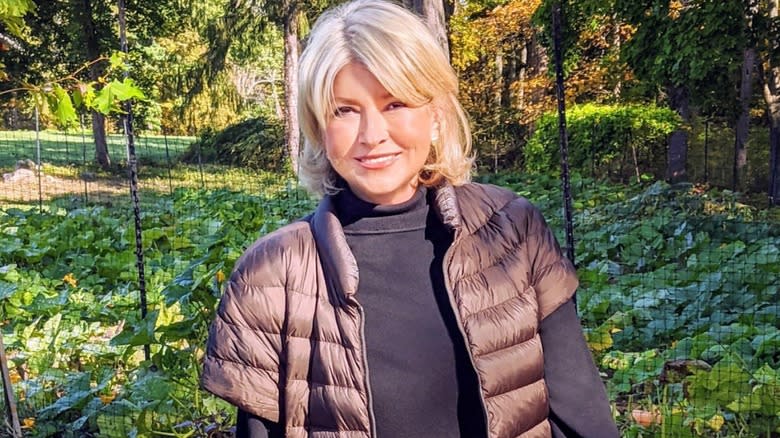
In our exclusive interview, Courtney McBroom said that she feels a natural kinship to the main character of "Lessons in Chemistry," Elizabeth Zott. Those similarities are something that helped her think creatively about how Zott fit into the American foodscape of yesteryear, as well as how to bridge her place in it to modern values.
"I resonate a lot with Elizabeth Zott," McBroom said. "I see a lot of myself in her, and I think there's a lot of her in me. That's how the food meshes from the 1950s to a modern style of cooking." Just as a variety of seasonings influence the expression of a dish, a chef's influences and role models impact their vision and tastes. So, who inspired McBroom along her journey to making the menu for "Lessons in Chemistry?"
None other than Martha Stewart, for starters. "Iconic garden, of course," said McBroom (she also mentions a love for Stewart's handicrafts). McBroom was quick to also note the late British food personality Keith Floyd as an admired paragon. Although Floyd wouldn't take to the BBC's T.V. programming until the '80s, his perspective on centering the act of food creation over the personality of a celebrity chef is something that is clearly exemplified by Elizabeth Zott.
There's A Clear Parallel Between TV Food Production And Restaurants
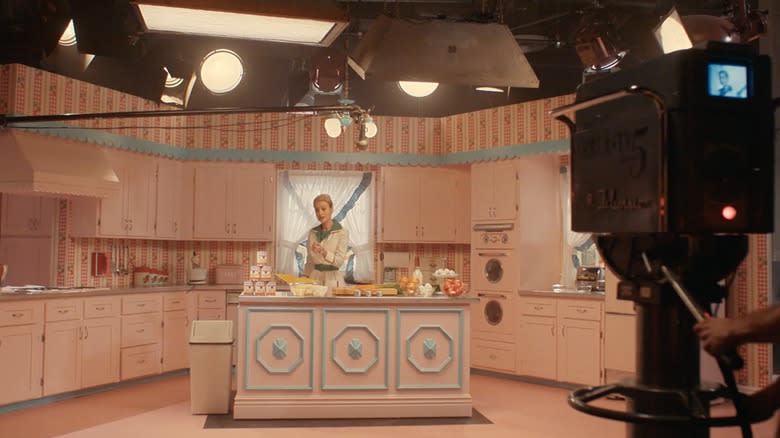
Courtney McBroom has spent a lot of her life hustling around restaurants, and, according to her, working in television doesn't differ all that much from being in customer-facing food service. "There's the restaurant vibe, and there's the T.V. production vibe," she said. "They're both very similar. It's like you're a team; you're going to battle; you're going to get this amazing thing done."
For anyone else who's been in food service (or watched enough episodes of "The Bear"), what you might be hearing is McBroom implying that there's a certain essence of chaos in both jobs. On the contrary, it's really only the spirit of camaraderie that joins the two experiences. Otherwise, each food-focused situation is relatively different in scope.
"In restaurants," said McBroom, "everyone is there for the food. The T.V. production food is just one small part of a much larger, overarching picture." That difference was something that McBroom found "interesting and inspiring." She was able to work with creative cinematographers, actors, directors, and writers to see her food concepts for the show come together in real-time and with artistic precision. McBroom also told us that seeing those plans recreated with careful but conscious expertise was actually a bit emotional: "I can't even tell you how many times I was almost brought to tears on set," laughs McBroom. "I said the thing. And then the thing happened!"
Not All Of The Favorite Food Moments Get Airtime
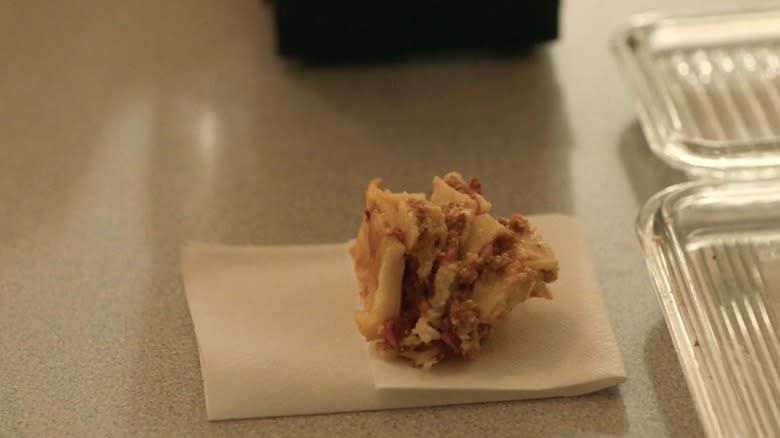
Throughout the eight-episode run of "Lessons in Chemistry," there are some humble yet starkly beautiful food scenes. The middle montage of episode one could stand alone as a short film titled "The Wooing of Man." Yet, even with the sheer number of dishes for viewers to feast on, the show's culinary consultant, Courtney McBroom, was able to narrow down a few preferred plates.
Referring to a delectable oyster mushroom and asparagus pastry, McBroom said, "That galette dish, for sure, was one of my favorites." Elizabeth Zott's lasagna was another prominent choice for McBroom as well. However, the culinary consultant's sleeper picks for "best dish" arrives in a mid-season segment of "Supper at Six," during a scene where Zott recommends beef tallow as the surprise preferred fat for baking cake. "The strawberry shortcake — and the whole beef tallow scenario — is one of my favorites," confirms McBroom.
Getting to watch your culinary creations come to life without the added pressure of serving them to a dining room of hungry, flesh-and-blood restaurant customers is a privilege not many culinary professionals get. In television food, the dishes are made for guests to consume them with eyes, minds, and sometimes ears. Unfortunately, there's no guarantee that what you cook will actually reach your intended diners for long. McBroom said one of her favorite dishes she created, a large crown roast, made it onto an episode of "Supper at Six" but received very little screen time overall.
The Table Is Fully Set
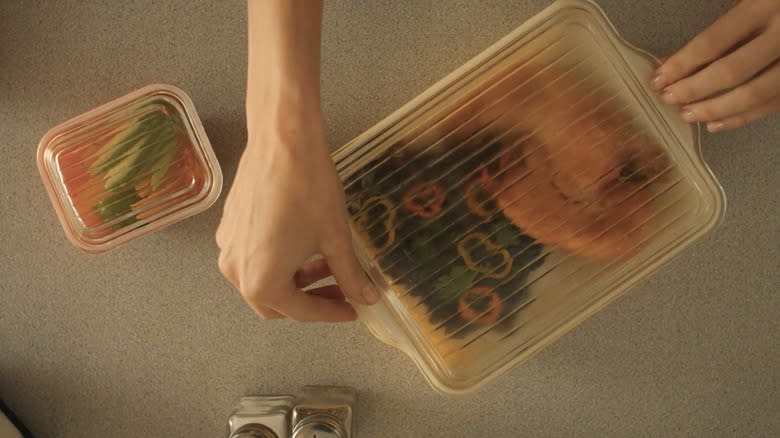
Along with the dishes that made it big and the dishes that never quite got their full 15 minutes of fame, "Lessons in Chemistry" has several instances where a celebration or gathering takes place, copious amounts of food abound, but the dishes on the table never get the full star treatment. In these circumstances, food serves as part of the setting rather than functioning as a character or thematic tool.
Consider that there are several large (or more formal) dinners that happen at key moments in the middle and end of the series (plus, a family dinner scene in between). In these moments, viewers are treated to an onlooker's view of the dinner tables, but we never get a sense of what's on them.
To satisfy our appetite for the foods of "Lessons in Chemistry," we asked Courtney McBroom to elaborate on what sorts of foods would have been center stage on the table during those gatherings and in this era. According to McBroom, those scenes involved so much food prep that they could cover an entirely separate television series. At the Sloane-Zott family dinner — one of McBroom's favorite meals that she cooked during production — the table featured braised short rib, mashed potatoes, and green beans almondine. But as the scene focuses mostly on conversation, we're rarely treated to a close-up of the grub.
Portraying Personal Connection Through Food Was A Guiding Theme
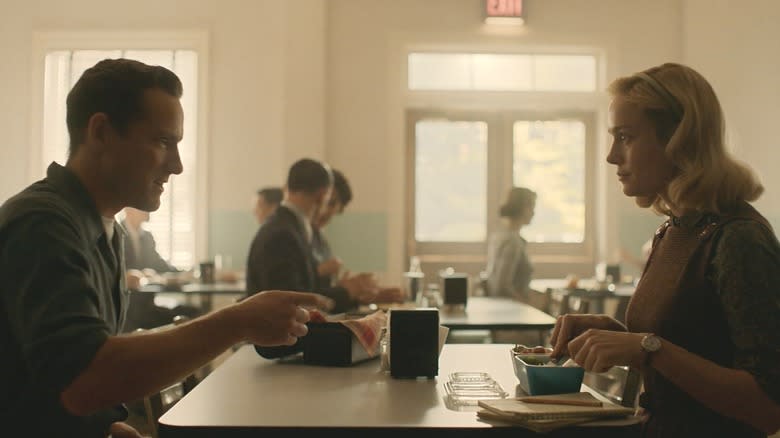
On the flip side of the scenes where food is simply a part of the setting or background, there are moments in the AppleTV+ adaptation of "Lessons in Chemistry" where food is actively moving the direction of an entire cast of characters. The job of culinary consultant Courtney McBroom was two-fold: To make sure that food functioned as a significant, literal device for pushing the plot forward, and see that it also worked as a metaphorical place where characters could meet, bond, and step into the theme of personal connection and community that threads this story. When asked where she most sees this theme at play in the show, McBroom easily identified two fundamental scenes.
"The main connections that are made through food in the series is [Elizabeth Zott's] connection with Calvin (Pullman)," said McBroom (see "The Wooing of Man"). She cites Calvin's first bite of lasagna as a pivotal moment that propels Zott's life into a new direction, especially when they begin to share lunch regularly. Later on in the series, Zott has a painful but necessary conversation with her neighbor, Harriet Sloane (King). The discussion occurs over leftover oysters and a kitchen counter, a realistic place where two neighbors might come to meet and listen to each other's perspectives. "There's so many family dinners throughout the show," said McBroom. "I think those do a really good job of showing food and the connections that it facilitates."
It Takes A Ton Of Pies For One Bite, And An Entire Team For Everything Else
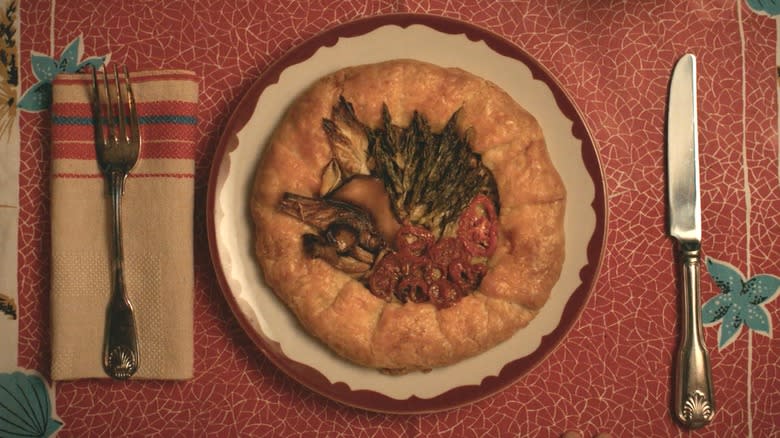
Many hands make light work, as they say. Courtney McBroom made sure to let Tasting Table know that while creating the food for "Lessons in Chemistry," she was certainly not a "one-woman show." Even with support, in the more high-profile food moments, McBroom reported working in the kitchen for up to a full week. She had help along the way with shopping, cooking, and styling the food before it was camera-ready. The support was particularly necessary for scenes like the one that occurs mid-season when Zott, in an emotionally fraught place, dedicates a swath of time to carefully baking an immaculate dinner pie, only to take a single, ruinous bite directly from the center.
"When she digs in and takes a bite, that was not one and done," said McBroom. "It was maybe six or seven takes, so you have to have six or seven of the exact same pie." You may think that with top-level talent like Brie Larson's, six or seven pie-takes would do the trick. However, for some dishes that appeared on screen, McBroom says the culinary team actually had to double the quantity. "Anytime there's a bite taken, you have to have really come prepared with like 12 to 15," said McBroom. "You never know how many takes it's going to be... You're not making one lasagna, you're making 15 lasagna."
Creating A Menu That Elizabeth Zott Would Be Proud Of
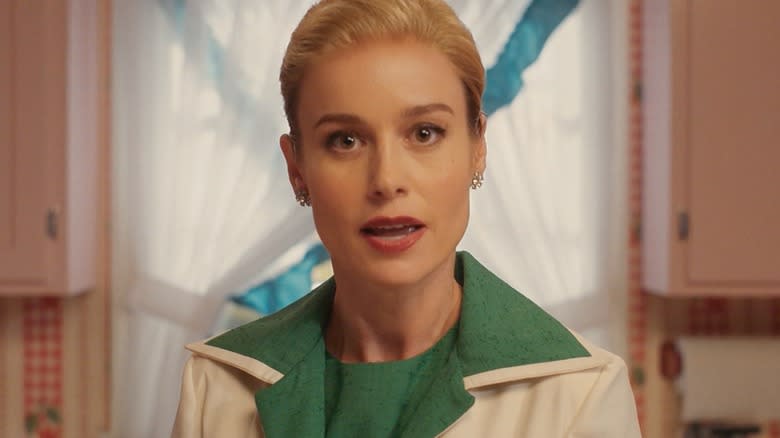
The thing that makes the character of Elizabeth Zott most endearing to the modern audience is her absolute rejection of the status quo of her time — including sexism, racism, and processed foods. It's a good thought experiment to imagine how a fictional character like Zott would react to present-day America's tolerance of these oppressive systems, and how she might feel about our foodscape, as well.
Along with the market's shift to include larger portions of grass-fed and free-range, organic, and superfood, it's tempting to say that Zott would be proud of where the American food scene is today. However, along with a renewed interest in whole-food eating, American markets are seeing a new, explosive wave of processed foods claiming retail space and palettes. Although many of these alternative snacks are made with nutrient-dense components or dietary restrictions in mind, we were left waffling over how Zott might perceive today's American eater.
Naturally, Courtney McBroom had much more clarity: "I think there's some really good stuff going on in American food today. I think that [Zott] would be down for it." She's quick to add a caveat, but McBroom remains positive overall. "There's always going to be fast food. But I think people are taking a really keen interest in food and where it comes from and using fresh ingredients."
Read the original article on Tasting Table.

